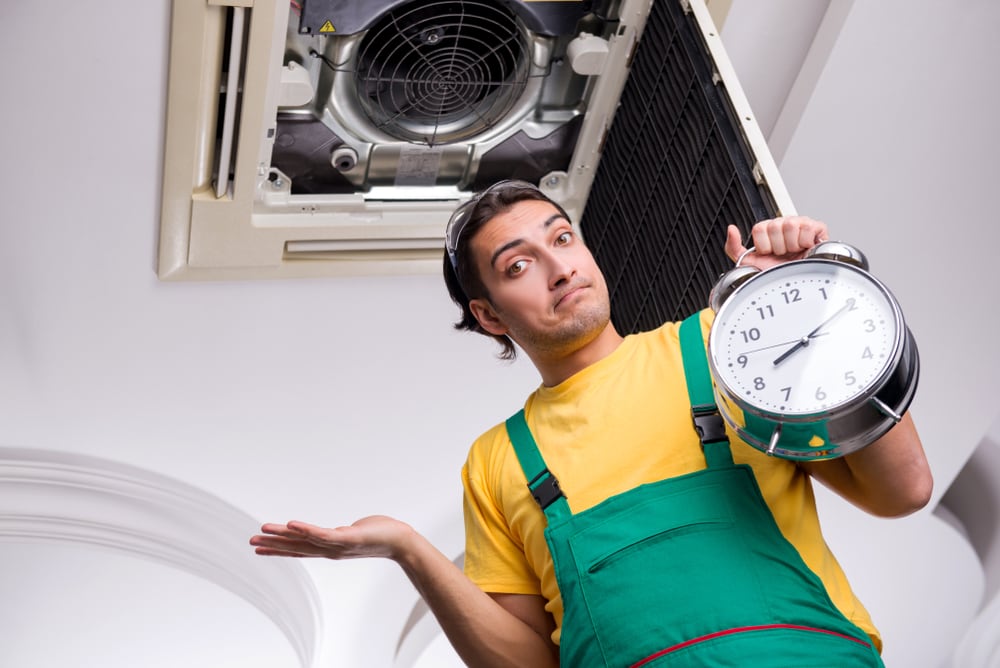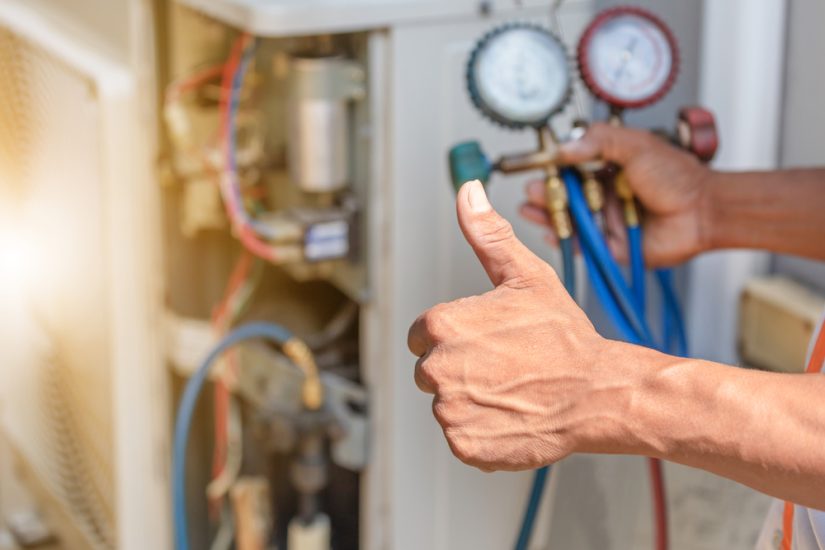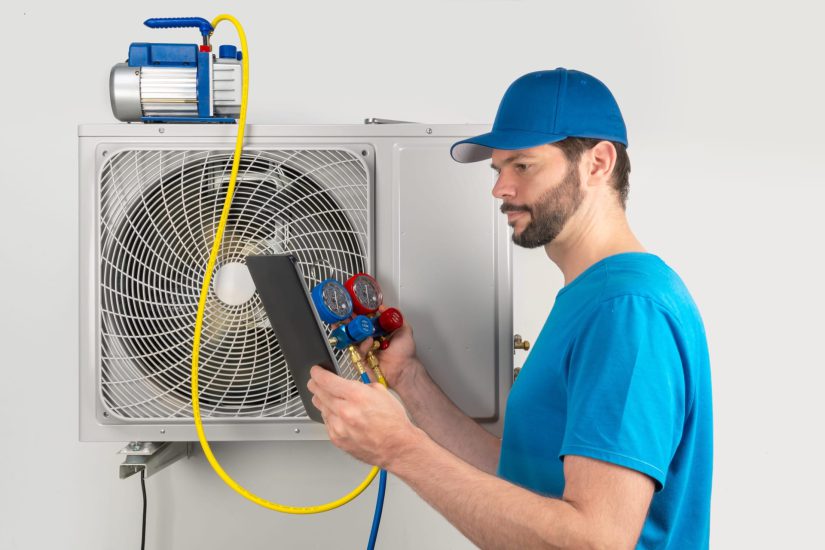
While the idea of keeping cool 24/7 sounds refreshing, there are a few surprising pitfalls to consider—beyond just a high energy bill—about running your AC nonstop.
Running an AC continuously for an extended period without any breaks can put strain on the system and may lead to excessive wear and tear, reduced efficiency, and potential malfunctions. How long you should run your unit depends on several factors, including its size, efficiency, environmental conditions, and maintenance.
Most modern AC systems are designed to handle continuous operation without issues, especially during hot summer months, but there are some things to keep in mind if you plan to run them nonstop:
Cycle On and Off: Even though AC units can run continuously, it’s still a good idea to allow the system to cycle on and off periodically. This helps prevent excessive strain and allows the system to rest.
Temperature Settings: A moderate indoor temperature can help maintain comfort without unnecessarily taxing the system. For most people, a recommended indoor temperature range is between 72-78°F (22-25°C) for cooling mode. Set the thermostat to a reasonable temperature to avoid overworking your AC.
Proper Maintenance: Regular maintenance, including cleaning or replacing air filters, checking refrigerant levels, and scheduling professional inspections, is essential for keeping your AC system running smoothly.
Environmental Considerations: Outdoor temperature, humidity levels, and sun exposure can impact how often and how long your AC needs to run. During extremely hot or humid months, the AC may need to run more frequently to keep your home comfortable and cool.
Size of the AC Unit: An appropriately sized AC unit for the space it’s cooling is essential. Oversized units may cycle on and off frequently, while undersized units may struggle to maintain desired temperatures, both of which can affect efficiency and performance.

Effects of Prolonged AC Usage on Performance
Yes, continuous AC operation can offer stable indoor comfort, but it will almost always result in increased wear on your system and excessive energy consumption. Proper maintenance and periodic rest are crucial to mitigating these pitfalls and maximizing the lifespan of your unit.
Continuous operation can lead to the overheating of your AC components—especially in hot climates or during periods of high demand—which increases the risk of malfunctions. On top of that, running your AC for extended periods of time leads to high energy consumption, especially with older systems. This can result in increased wear on components and higher operating costs over time.
If you’re running your AC continuously, you’re likely to need more frequent maintenance to ensure the system remains in peak condition. Failure to perform regular maintenance tasks such as cleaning coils, checking refrigerant levels, and replacing filters can also shorten the lifespan of the unit.
Signs Your AC System Needs Maintenance or Repair
Here are the most common red flags associated with prolonged AC usage, and when you should call a professional to diagnose the issue and repair your system:
Inadequate Cooling: The most obvious sign that your AC system needs repair is that it’s not adequately cooling your space to the set temperature, despite running continuously or frequently cycling on and off.
Uneven Cooling: Certain areas or rooms in your home may be significantly warmer or cooler than others. This either indicates poor airflow distribution or insufficient cooling capacity.
Longer Cooling Cycles: If your AC system needs to run for longer periods or work harder than usual to cool your space, it’s likely that something is malfunctioning.
Frequent Cycling On and Off: Conversely, the AC system may cycle on and off frequently (known as short cycling), which can indicate refrigerant leaks or inadequate airflow. Short cycling is a common problem with oversized units.
Increased Energy Bills: An easy way to tell if your AC system is overworked is to look at your utility bill. Is it higher than usual? This is often a sign that something’s awry. When AC systems struggle to maintain desired temperatures, they consume more energy than usual to compensate for inefficiencies, leading to higher utility bills.
Reduced Airflow: Weak or reduced airflow from the AC system’s vents can indicate problems with the blower motor, clogged air filters, blocked ductwork, or other airflow restrictions.
Loud or Unusual Noises: Unusual sounds such as banging, rattling, or squealing coming from the AC unit may indicate mechanical problems or worn-out components that are hindering the system’s ability to cool effectively.
Ice Build-Up: Ice formation on the evaporator coils or refrigerant lines is a clear sign of cooling system issues, such as low refrigerant levels, restricted airflow, or a malfunctioning compressor, all of which can impede the system’s ability to do its job.
Thermostat Inaccuracies: If the thermostat readings do not accurately reflect the actual temperature of your home, the AC system will have incorrect cooling settings and it will struggle to maintain the desired temperature.
Persistent Humidity: Your AC system should effectively dehumidify the air to keep your home comfortable. If indoor humidity remains high despite cooling efforts, there may be an issue with the AC system’s dehumidification capabilities.

Optimal AC Run Time for Energy Efficiency
Determining your AC system’s optimal run time for energy efficiency depends on many things, including climate, insulation, unit size, temperature preferences, and electricity cost. Aim for a balance between running the AC long enough to maintain a comfortable indoor temperature while avoiding excessive energy consumption.
Not only will these energy-saving strategies lower energy consumption and utility costs, but they’ll also contribute to reducing carbon emissions and mitigating climate change.
You should utilize a programmable thermostat to adjust the temperature settings based on occupancy patterns and preferences. Some smart thermostats provide energy usage data and recommendations for optimizing runtime and efficiency. It’s important to keep the AC unit well-maintained by cleaning or replacing air filters, checking refrigerant levels, and scheduling professional inspections.
Use blinds, curtains, or external shading to block direct sunlight and reduce solar heat gain, especially on windows facing south and west. Minimizing heat gain helps the AC system maintain comfortable temperatures.
Make sure your windows and doors are properly sealed and that your home has adequate insulation. A well-insulated and sealed home requires less cooling, which reduces the AC’s runtime and energy consumption. If possible, implement zoning systems to control the temperature independently in different areas of your house. This allows for more precise temperature control and can reduce the overall runtime of the AC by only cooling occupied areas.
Troubleshooting Tips
If you are experiencing issues with your AC unit, then here are a few ways to tackle the problem head-on:
- Ensure the thermostat is set to “cool” mode and to the desired temperature. Verify that the thermostat batteries are not dead, and that the display is functioning correctly.
- Inspect the air filter. A dirty or clogged air filter can restrict airflow and reduce cooling efficiency. Check and replace the filter every 1-3 months.
- Ensure all supply and return vents are open and unobstructed to allow proper airflow throughout your home.
- Check the circuit breaker or fuse box to ensure the AC unit has power, and reset the breaker if need be.
- Inspect the indoor air handler for any signs of water leaks, ice buildup, or strange noises. These could indicate issues with the evaporator coil, blower motor, or condensate drain.
- Check the outdoor condenser unit for leaves, grass, or dirt that might be blocking airflow. Clean the unit and trim any overgrown bushes, grass, or shrubs to ensure there is at least 2 feet of clearance around it.
- Pay attention to any out of the ordinary sounds coming from your AC system, such as grinding, squealing, or banging noises. These are usually signs of mechanical issues that require attention.
- Look for signs of refrigerant leaks, such as hissing sounds, oil stains, or ice buildup on the refrigerant lines. If you suspect a leak, contact a qualified HVAC technician for repair.
- Capacitor issues can cause the AC compressor or fan motor to fail to start. Test the capacitor using a multimeter to ensure it’s functioning correctly.
If you’re not sure what to do next, it’s best to contact a licensed HVAC technician to get an expert opinion on how to repair your AC system.
Don’t Wait Until Problems Arise—Schedule Your AC Maintenance Today for Reliable Cooling All Year Round.
Regular AC maintenance is a worthwhile investment that provides peace of mind, improved performance, energy savings, and a healthier indoor environment for you and your family. At House Pro Energy Solutions, we are dedicated to providing top-notch HVAC services to the Houston, TX area with a specialization in air conditioning maintenance, repair, and installation. Our HVAC experts provide top-notch repair services, maintenance, and replacements, and we offer 24/7 support for all your HVAC needs. Call us today or fill out this online contact form to request an estimate or schedule your air conditioning repair or maintenance service. Get ready to experience the House Pro difference!

